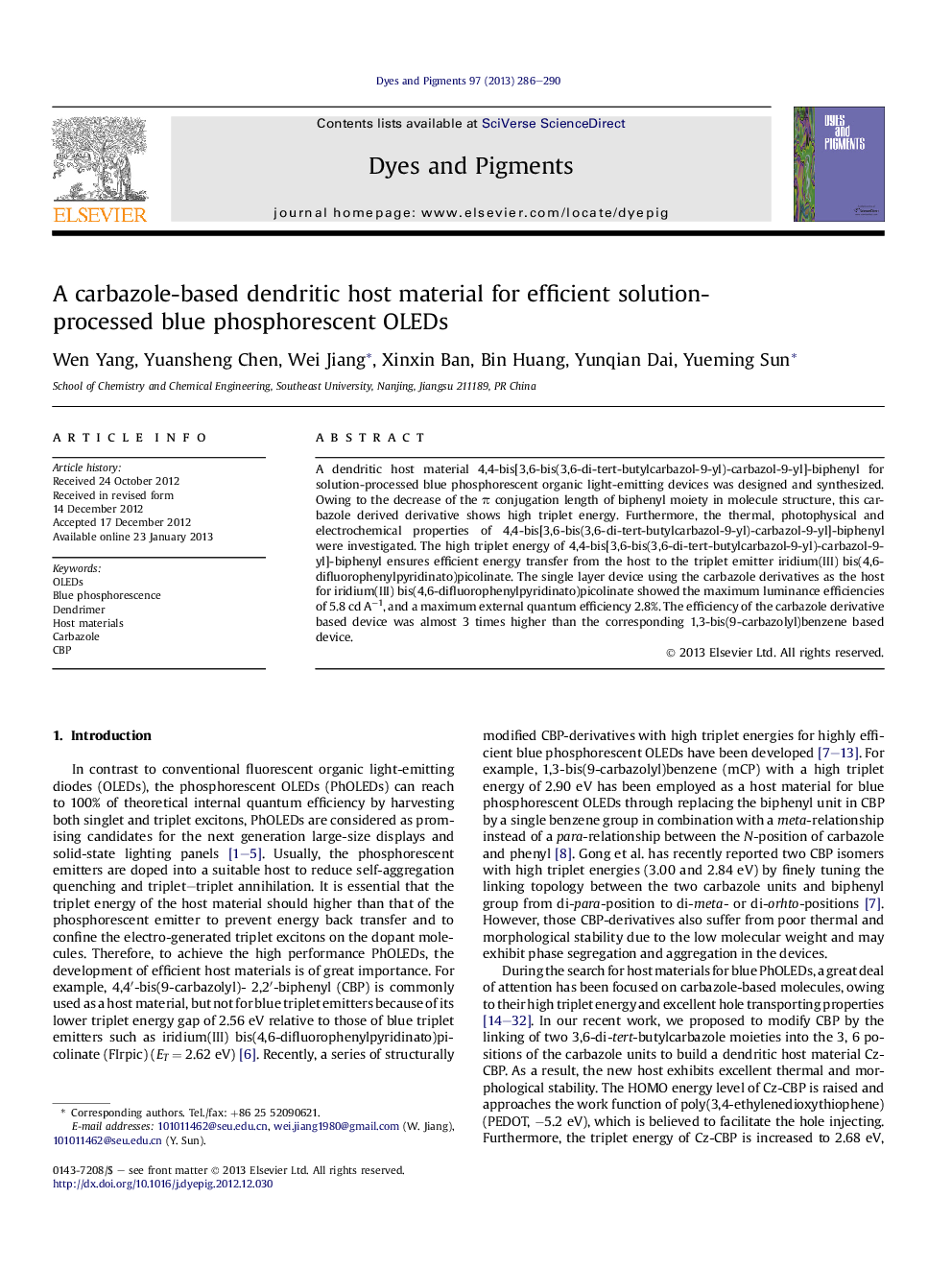| Article ID | Journal | Published Year | Pages | File Type |
|---|---|---|---|---|
| 176591 | Dyes and Pigments | 2013 | 5 Pages |
A dendritic host material 4,4-bis[3,6-bis(3,6-di-tert-butylcarbazol-9-yl)-carbazol-9-yl]-biphenyl for solution-processed blue phosphorescent organic light-emitting devices was designed and synthesized. Owing to the decrease of the π conjugation length of biphenyl moiety in molecule structure, this carbazole derived derivative shows high triplet energy. Furthermore, the thermal, photophysical and electrochemical properties of 4,4-bis[3,6-bis(3,6-di-tert-butylcarbazol-9-yl)-carbazol-9-yl]-biphenyl were investigated. The high triplet energy of 4,4-bis[3,6-bis(3,6-di-tert-butylcarbazol-9-yl)-carbazol-9-yl]-biphenyl ensures efficient energy transfer from the host to the triplet emitter iridium(III) bis(4,6-difluorophenylpyridinato)picolinate. The single layer device using the carbazole derivatives as the host for iridium(III) bis(4,6-difluorophenylpyridinato)picolinate showed the maximum luminance efficiencies of 5.8 cd A−1, and a maximum external quantum efficiency 2.8%. The efficiency of the carbazole derivative based device was almost 3 times higher than the corresponding 1,3-bis(9-carbazolyl)benzene based device.
Graphical abstractFigure optionsDownload full-size imageDownload as PowerPoint slideHighlights► A novel host material Cz-CBP for solution processed blue PhOLEDs was synthesized. ► Cz-CBP possesses high triplet energy and extremely high glass-transition temperature. ► The luminance efficiency of Cz-CBP based device was nearly 3 times higher than of mCP with the same structure.
